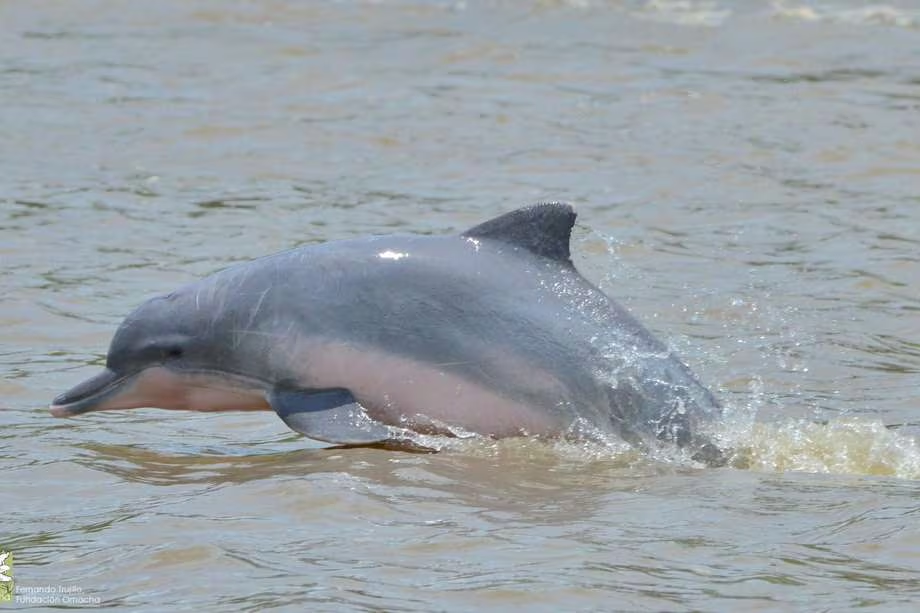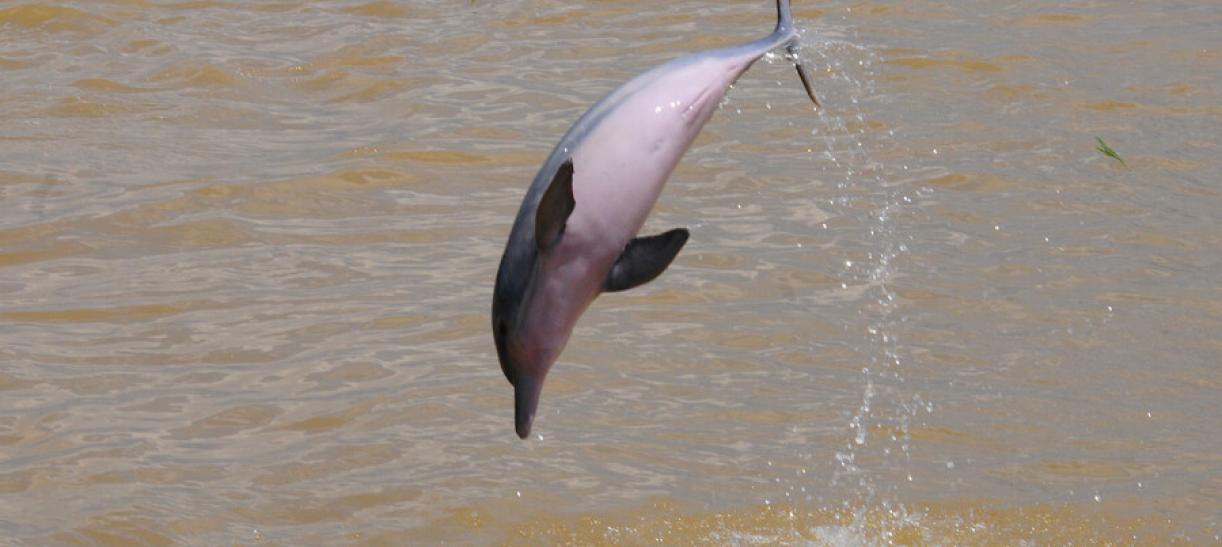**Nota publicada originalmente en the New York Times
Why were Solivian river dolphins swimming around with a large predatory snake in their mouths? “There are so many questions,” one researcher said.
By Carolyn Wilke
May2, 2022
In August 2021, a research team was documenting biodiversity near the Tijamuchi River in Bolivia when they saw sorne animals that are typically difficult to observe: Bolivian river dolphins.
Just seeing them with their heads above the river was extraordinary, said Steffen Reichle, a biologist at the Noel Kempff Mercado Museum of Natural History in Santa Cruz de la Sierra, Bolivia, and a member of the team. They knew something was up and started snapping photos.
Only after scrolling through the images the team captured did the researchers realize the dolphins were dangling an anaconda around as they swam.
The researchers described what they saw in the journal Ecology last month. While dolphins in captivity and the wild are known for being playful, the surprising behavior of the Bolivian cetaceans seems like a new frontier in frolicking among the aquatic mammals, and sorne scientists still aren’t sure what to think about what the team observed.
Dr. Reichle says Bolivian river dolphins usually swim below the surface, and sightings often catch only a fin or a tail. But sorne of the six animals they saw kept their heads above the turbid water for an unusually long time.
At one point, two male dolphins seemingly swam in sync, a snake held by the animals’ mouths. Anacondas are semiaquatic and can hold their breaths for sorne time. But because the snake was handled for at least seven minutes, much of this submerged, it probably perished.
“I don’t think that the snake had a very good time;’ Dr. Reichle said.
Because of how long this interaction went on, the team suspects play – not predation. Bolivia’s native Beni anacondas are apex predators. Other than a single case of cannibalism, researchers haven’t documented the serpents being eaten. In this case, the team did not see where the snake ended up.
With how lively dolphins are, “playing seems like a pretty good answer;’ said Ornar Entiauspe-Neto, one of the paper’s authors and a taxonomist at Universidade Federal do Rio Grande do Sul in Brazil.
Sorne of the dolphins gathered were juveniles, which could suggest another dimension of the interaction: The adults may have been teaching the youngsters about anacondas or showing them a hunting technique.
But Sonja Wild, a behavioral ecologist at Max Planck Institute of Animal Behavior in Germany, who was not part of the study, was skeptical that the interaction was purposely instructive. lt’s more plausible the juveniles were observing because they were curious, she says.
And because anacondas are strong, Dr. Wild wonders if the snake was injured or dead before the dolphins got to it. Of ali the things one could pick up, “this seems a little extraordinary,” she said.
“This is the first time I’ve heard of dolphins playing with a large snake:’ added Dr. Wild, who has observed bottlenose dolphins using shells as tools.
Something else from the photos was notable – the male dolphins’ erect penises.
“lt could have been sexually stimulating for them:’ said Diana Reiss, a marine mammal scientist and cognitive psychologist at Hunter College in New York who was not involved with the study. “lt could have been something to rub on.”
The aroused males could have been having a sexual romp with each other before the snake became entangled.
Researchers who study dolphins are well aware of the animals’ sexual proclivities, such as rubbing their genitals on toys or inserting their penises into objects, animate and inanimate. They often use their penises for tactile interactions, Dr. Reiss says. She has even observed male bottlenose dolphins trying to penetrate the blowhole of a rescued pilot whale in an aquarium. lt’s possible, she added, that the males tried to insert their penises into the snake.
“There are so many questions:’ Mr. Entiauspe-Neto says.
A lot more is known about ocean-dwelling dolphins than riverine ones, in part because it’s harder to see what’s going on when river water is muddy. Even though they’re limited in nature, “these observations are always valuable:’ Dr. Reiss says. “lt’s giving us another glimpse of the lives of these animals, particularly in the wild.”
Whatever happened in this animal encounter, it’s not the stuff of children’s storybooks.





